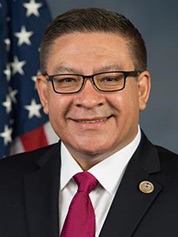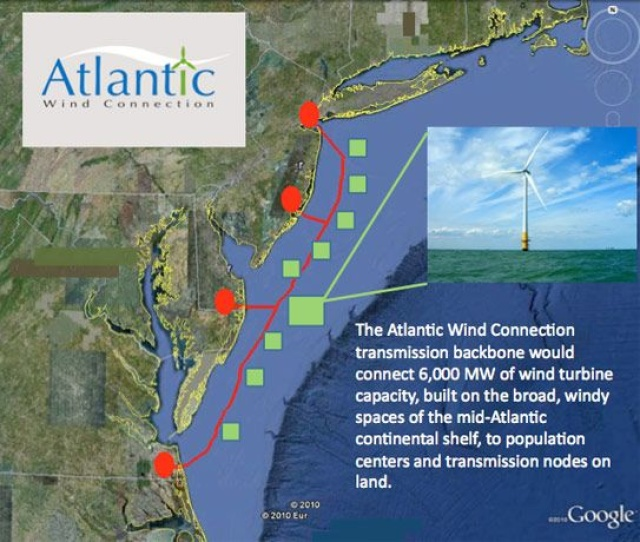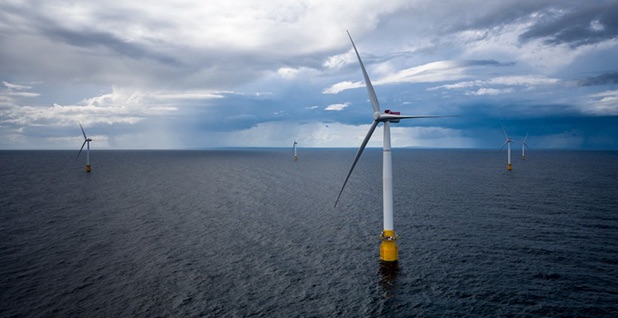Adam Stern, executive director of the Menlo Park, CA-based trade association, Offshore Wind California, told AJOT that “progress has been made in the federal approval process” conducted by the Bureau of Ocean Energy Management (BOEM) so that auctions of offshore wind sites, “may begin in 2021.”
Three prospective offshore sites are:
- Morro Bay
- Diablo Canyon
- Humboldt Bay
Stern noted “there is good transmission infrastructure at Morro Bay and at Diablo Canyon, but more limited transmission infrastructure at Humboldt Bay.”
The new wind farms could create economic development for California and for ports supporting assembly and manufacturing, he noted.
Objections from U.S. Navy
Stern noted that a stumbling block to faster federal approvals of offshore wind farm sites has come from the U.S. Navy and the U.S. Defense Department (DOD).
DOD claims wind turbines could interfere with radar and low-altitude flights and conflict with live-fire drills and rapid-deployment missions in Southern and Central California and so it has objected to offshore wind farms proposed for Central California.
Objections from the Navy have reportedly been addressed and a resolution was in sight so that BOEM could begin conducting auctions of offshore wind farm development sites in 2021, according to federal and industry officials.
However, recent objections from a Trump Administration appointed DOD official have created doubts about the resolution and prompted a reaction by Representative Salud Carbajal (D-Calif.), a former U.S. Marine, whose district includes Morro Bay. Carbajal proposes to curb DOD and U.S. Navy influence over offshore wind projects in California.

E&E News reported that as recently as February, talks with the U.S. Navy appeared to be progressing and resulted in the release of a map with areas marked out for possible development. Then the objections from the Trump Administration DOD appointee prompted Carbajal to author a rider tucked into the House version of the National Defense Authorization Act that would curb the Navy’s influence over wind farm designations.
The offshore wind platforms planned in California would be fastened to the ocean floor with cables and float on the surface of the sea. This reflects a next generation of technology and is necessary since California coastal waters are too deep to handle traditional shallow draft wind turbines built into the sea bed that are planned for the U.S. East Coast.
Only a handful of floating wind turbines have been built internationally.
In the United States, a pilot project wind farm is being developed in Maine. The design is based on a wind turbine in which the base of the floating structure will be built in the United States.
Officials at the California Energy Commission are currently taking public comments on potential areas for development.
Stern points out that auctions for offshore California sites only accord the developer the right to build a windfarm. There is still the challenge of permitting, finance, construction and logistical support. These issues must still be addressed before a successful windfarm can be built. As a frame of reference, the successful bid for one offshore wind-site on the East Coast was $140 million, he said.
Coastal Transmission Line?
Stern said a major challenge for wind turbine developers, who are currently developing wind farm projects on the U.S. East Coast, is linking power generated by wind farms offshore to land-based transmission systems.
The proposed Atlantic Wind Connection (AWC), in which Google was an investor, planned to address this issue by building an offshore transmission line so as to link windfarms planned off the coasts of states between New Jersey and Virginia and connect them to land-based transmission systems (see map below).

Stern believes the project was ten years ahead of its time. If built today, the AWC could create a new transmission system as a back-up to older systems as well as streamline the transmission delivery for a number of windfarms that are being developed along the East Coast.
Stern said building an AWC-type system for California would also create a new transmission system that could replace older land-based systems, improving delivery of offshore windfarm power.

The result would expand the market for offshore wind farms beyond Central California and Humboldt Bay so as to deliver renewable energy to densely populated regions such as the San Francisco Bay Area and Southern California.
Wind Farm Jobs and Economic Development Projection for California
In 2019, the Norwegian oil and gas giant Equinor, sent a team to inspect the California ports of Long Beach, Hueneme and San Francisco as possible sites for wind turbine assembly ports. Equinor is planning on bidding on California wind farm sites. The company has expanded into building floating offshore wind turbines and developed the Hywind offshore wind farm off the coast of Scotland (see photo above).
In May, Offshore Wind California issued a white paper “Offshore Wind for California: Job Creation, Economic Development, and Clean Energy” outlining possible economic and job benefits:
- Jobs for California workers – Offshore wind will create well-paid, technical jobs such as electricians, welders, turbine technicians, longshoremen, truck drivers, crane operators, ironworkers, pipefitters, pile drivers, engineers, mechanics, scientists, and offshore equipment and vessel operators.
- The National Renewable Energy Laboratory estimates that a 16 GW (gigawatt) offshore wind build-out in California would create 23,780 construction jobs and 4,270 permanent operations and maintenance jobs by 2045. (NREL, 2016). Accelerating offshore wind development to maximize economic and environmental benefits for the 2030 timeframe will create these jobs even sooner.
- For California’s ports – A robust offshore wind industry will revitalize ports in the state with investments to manufacture, assemble, and install wind turbines and towers. The Port of Humboldt Bay has already issued an RFP for an offshore wind terminal and manufacturing facility. Other ports such as Richmond, Stockton and Vallejo could be renovated to support parts of the offshore wind supply chain. (U.C. Berkeley Center for Labor Research and Education, 2019)
- For California’s economy – NREL also projects that 16 GW of offshore wind would generate $48.6 billion in GDP for the state by 2050. Again, economic activity would develop faster with accelerated project timelines.
- For California’s ratepayers – Another report found that 7-9 GW of offshore wind in California by 2030 can save electricity users up to $2 billion… By 2040, the savings would increase to $150 to $190 million per year.
Clean Energy and Climate Benefits
- Offshore wind is essential to California achieving its renewable energy and greenhouse gas reduction goals for 2030 and 2040. Total new renewable capacity needed to meet California’s 2050 GHG (Greenhouse Gas) goals range from 100 to 150 GW. Efficient, high capacity offshore wind at scale achieves multiple, overlapping goals.
- California’s economic recovery depends in part on broad-based action in the clean energy sector. The workforce development, infrastructure, ports, and energy benefits that offshore wind can deliver will strengthen the recovery and contribute to sustained economic growth.
- Setting a goal of at least 10 GW of offshore wind for California should be part of the state’s near and long-term energy planning.

